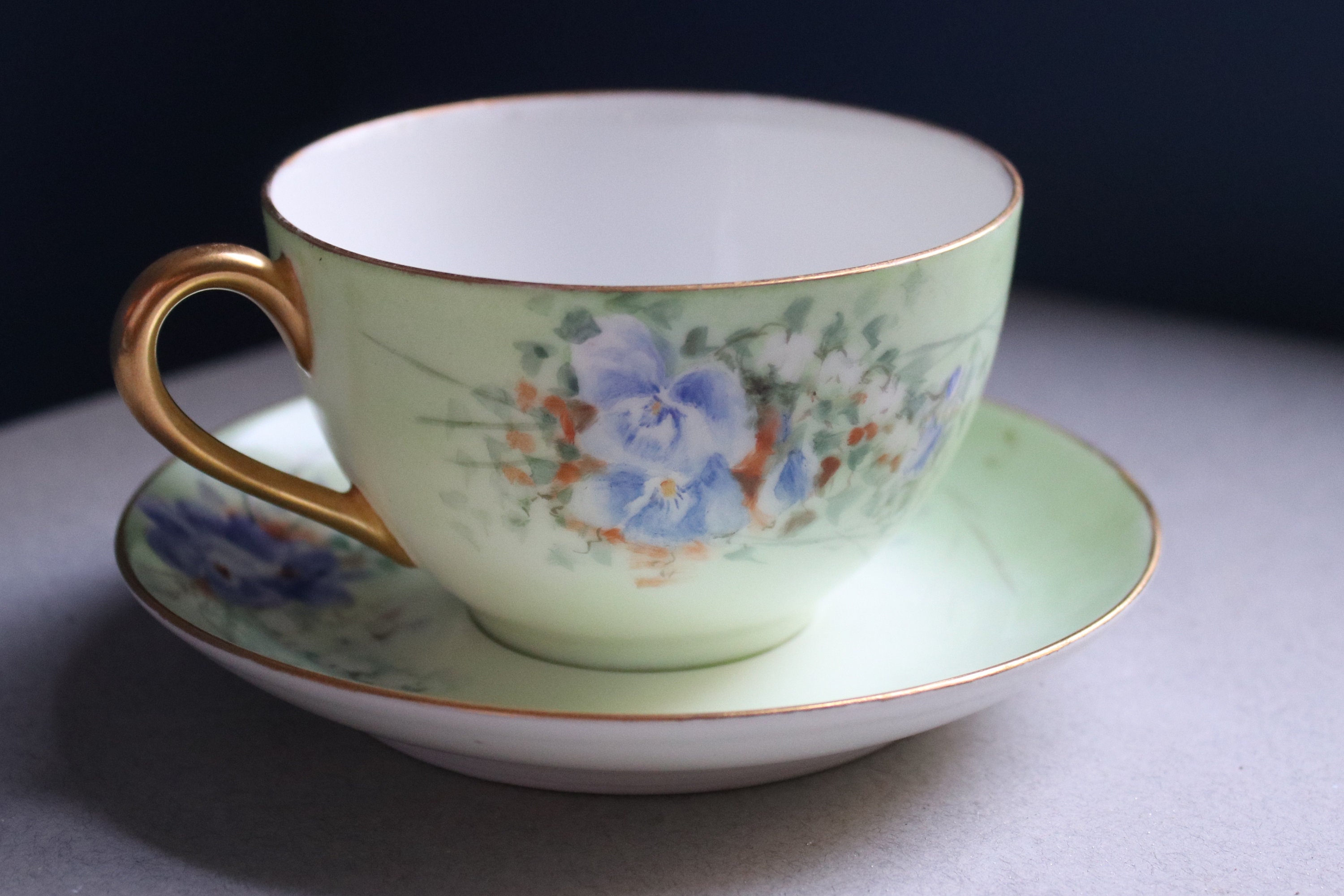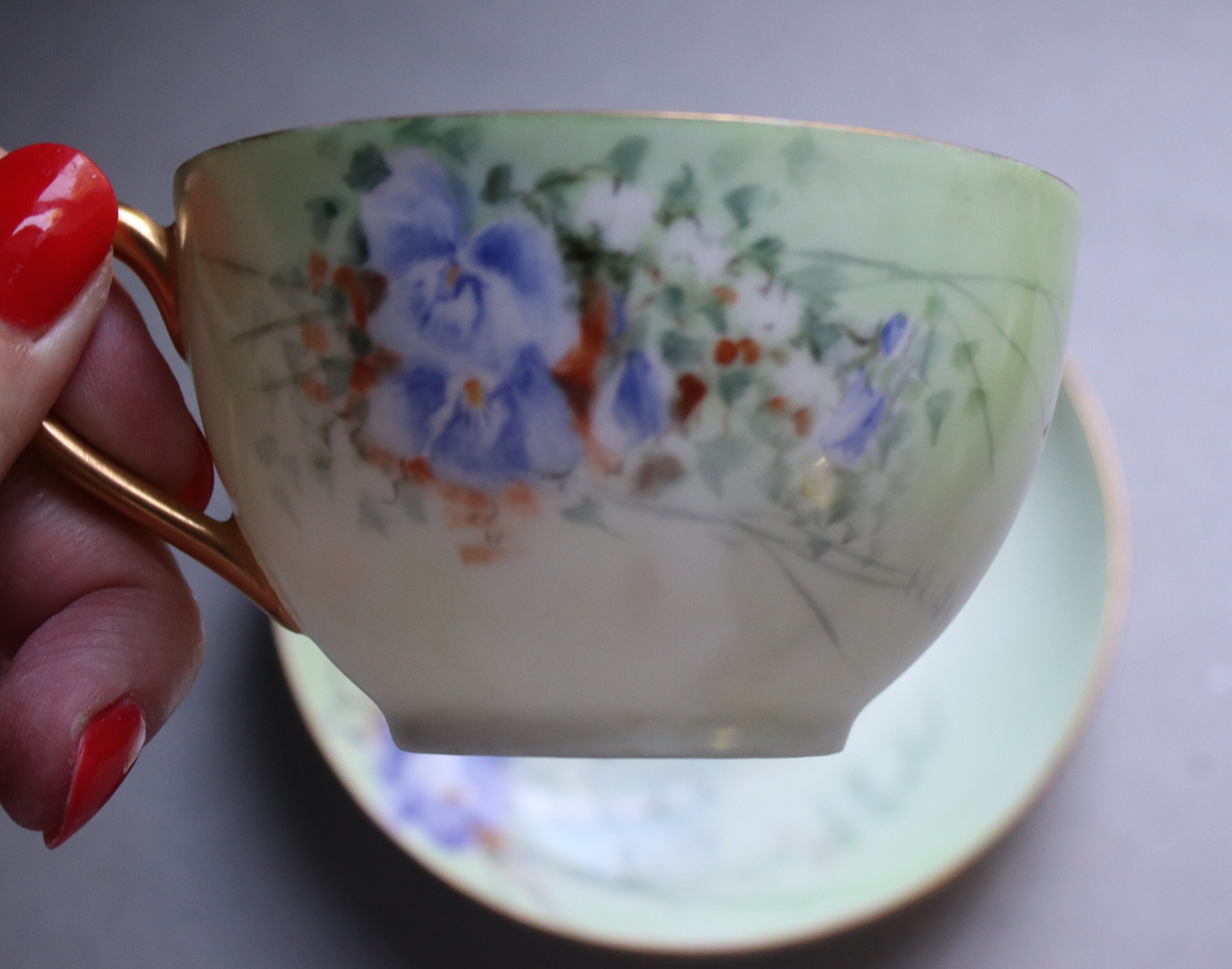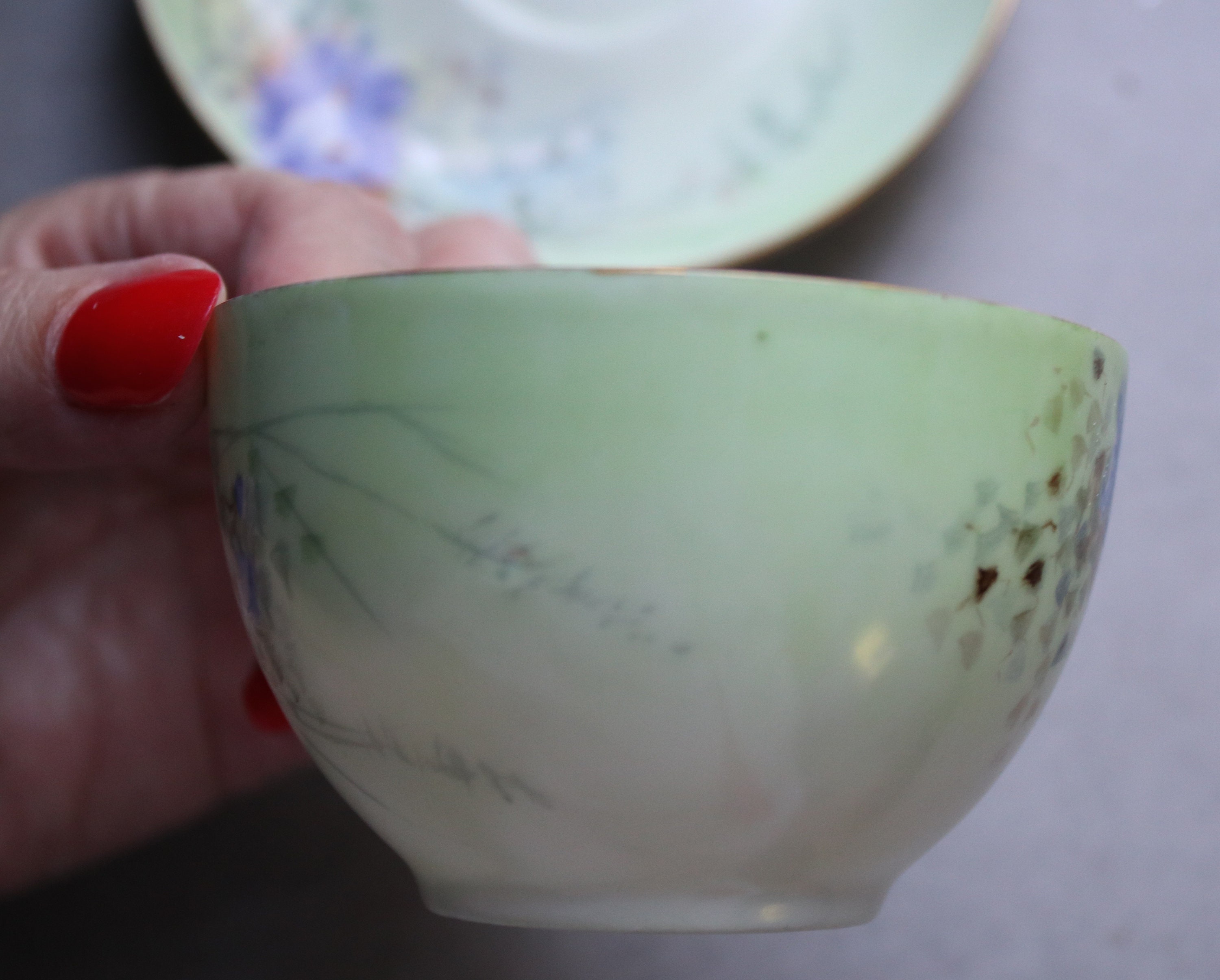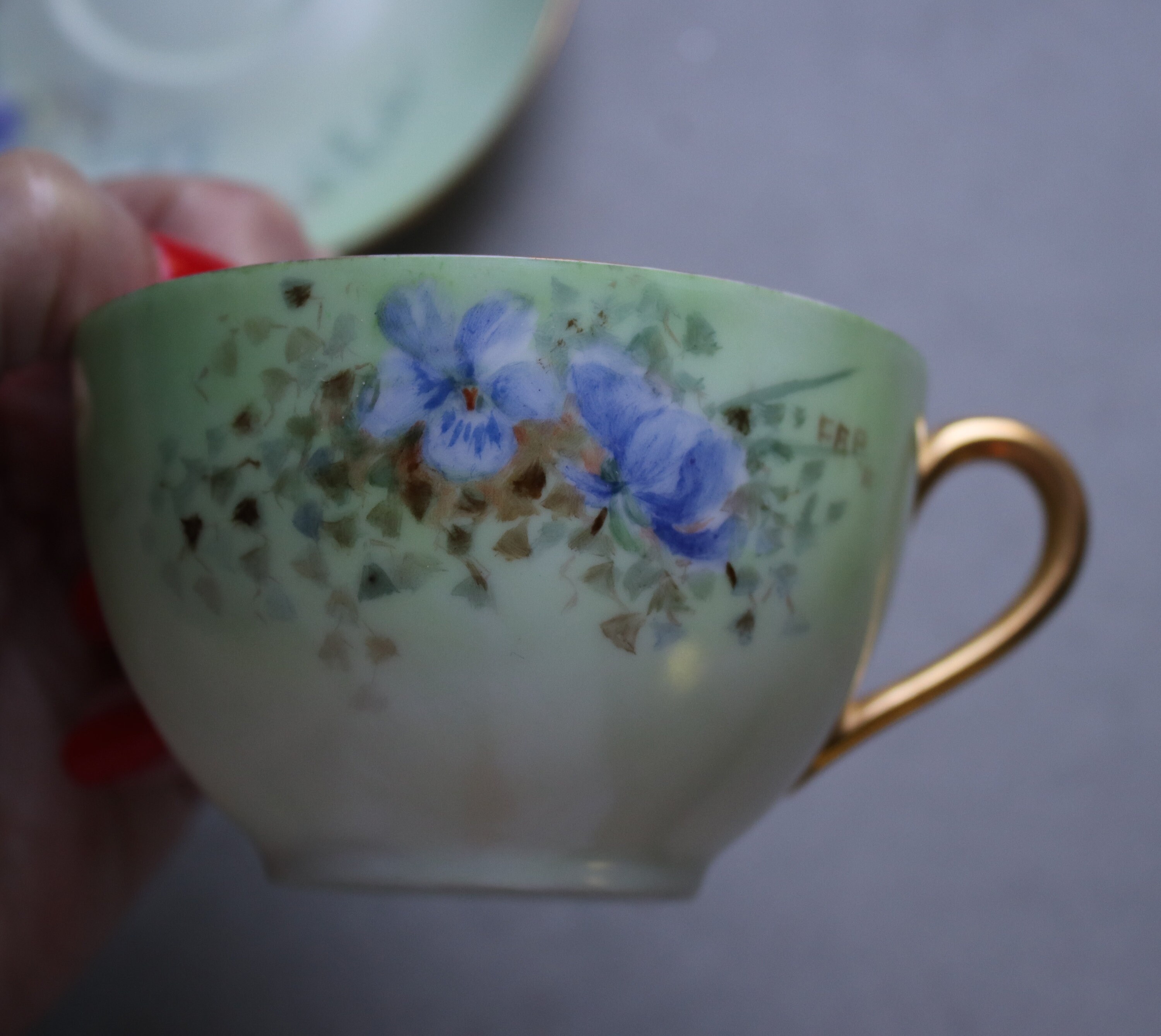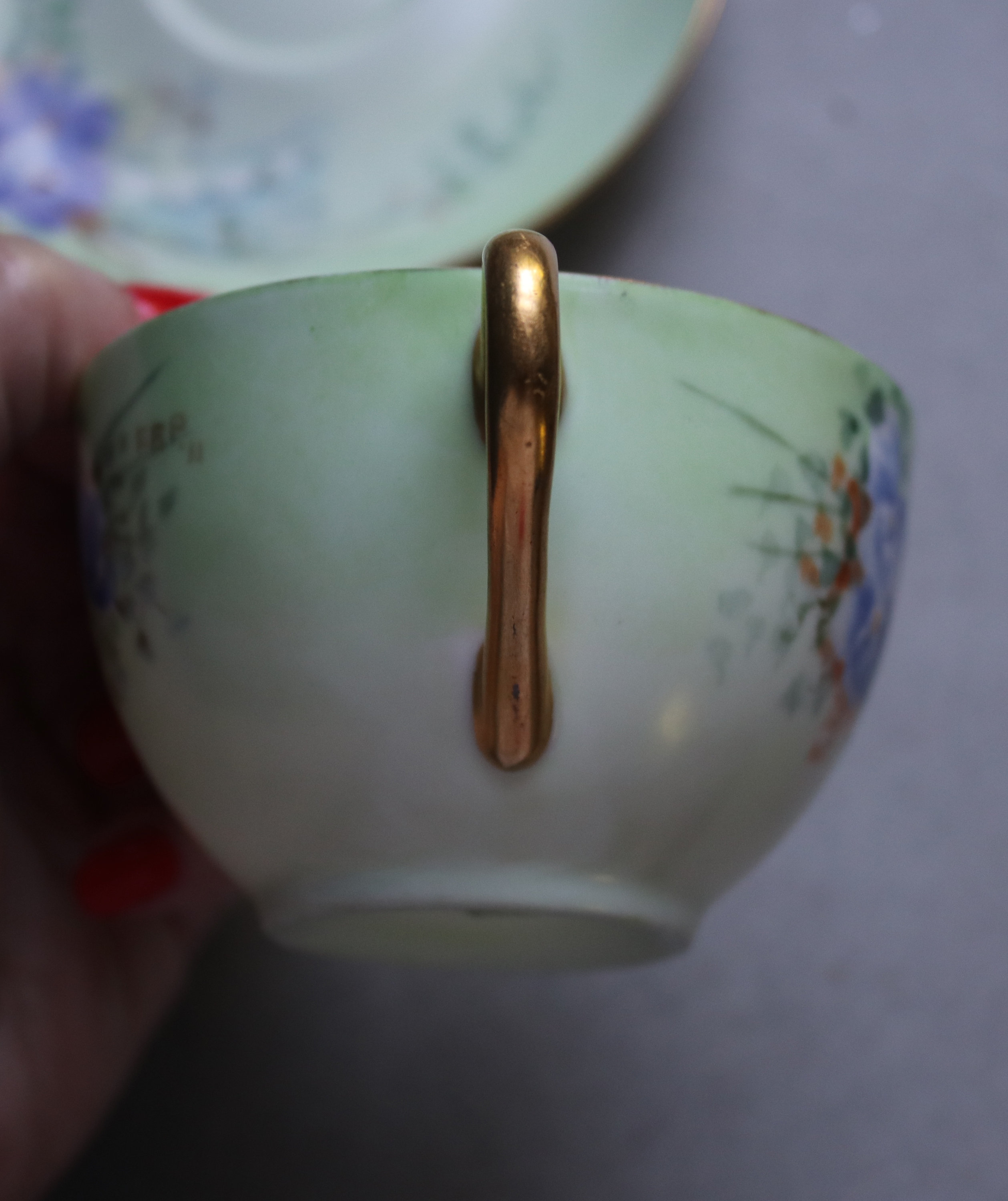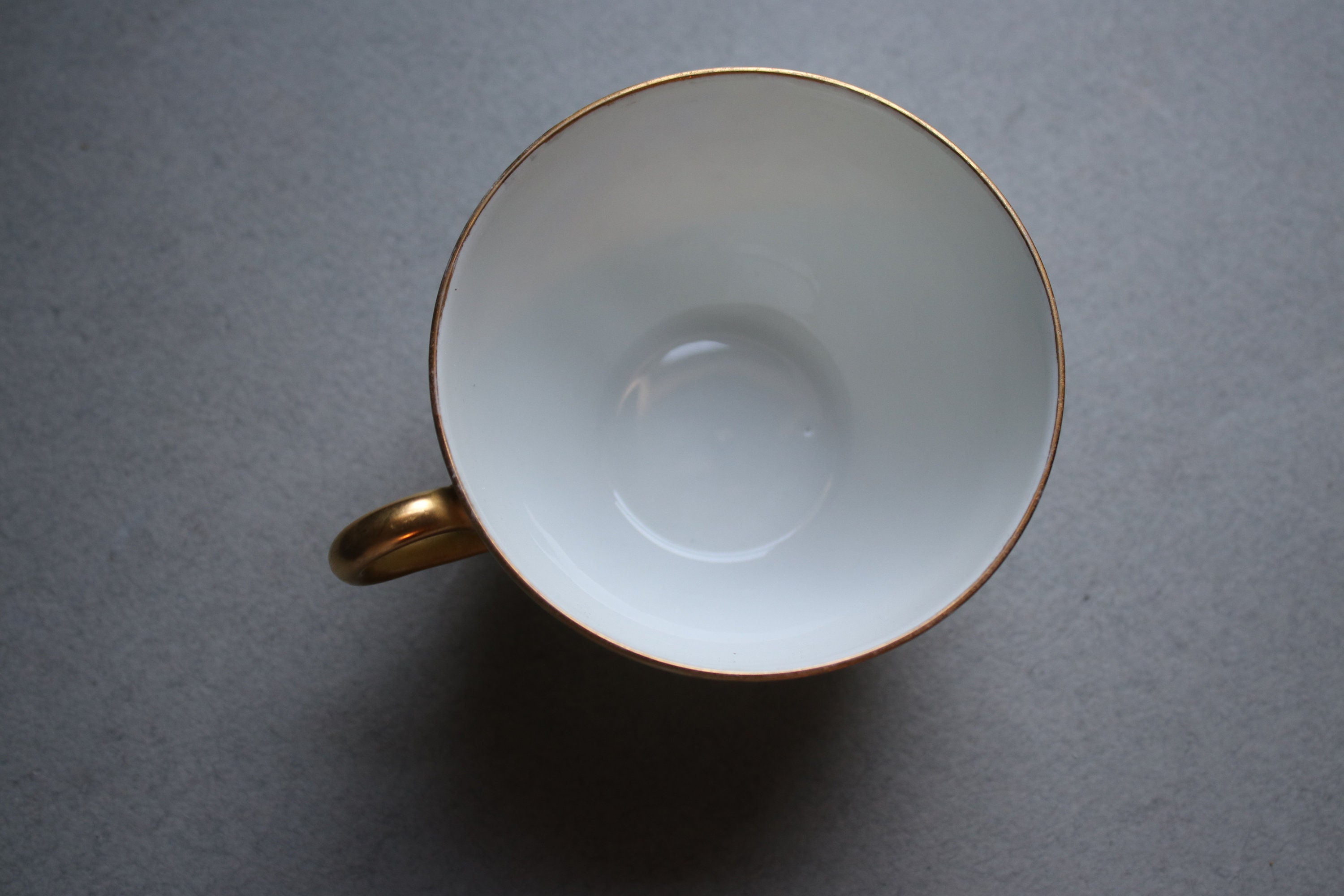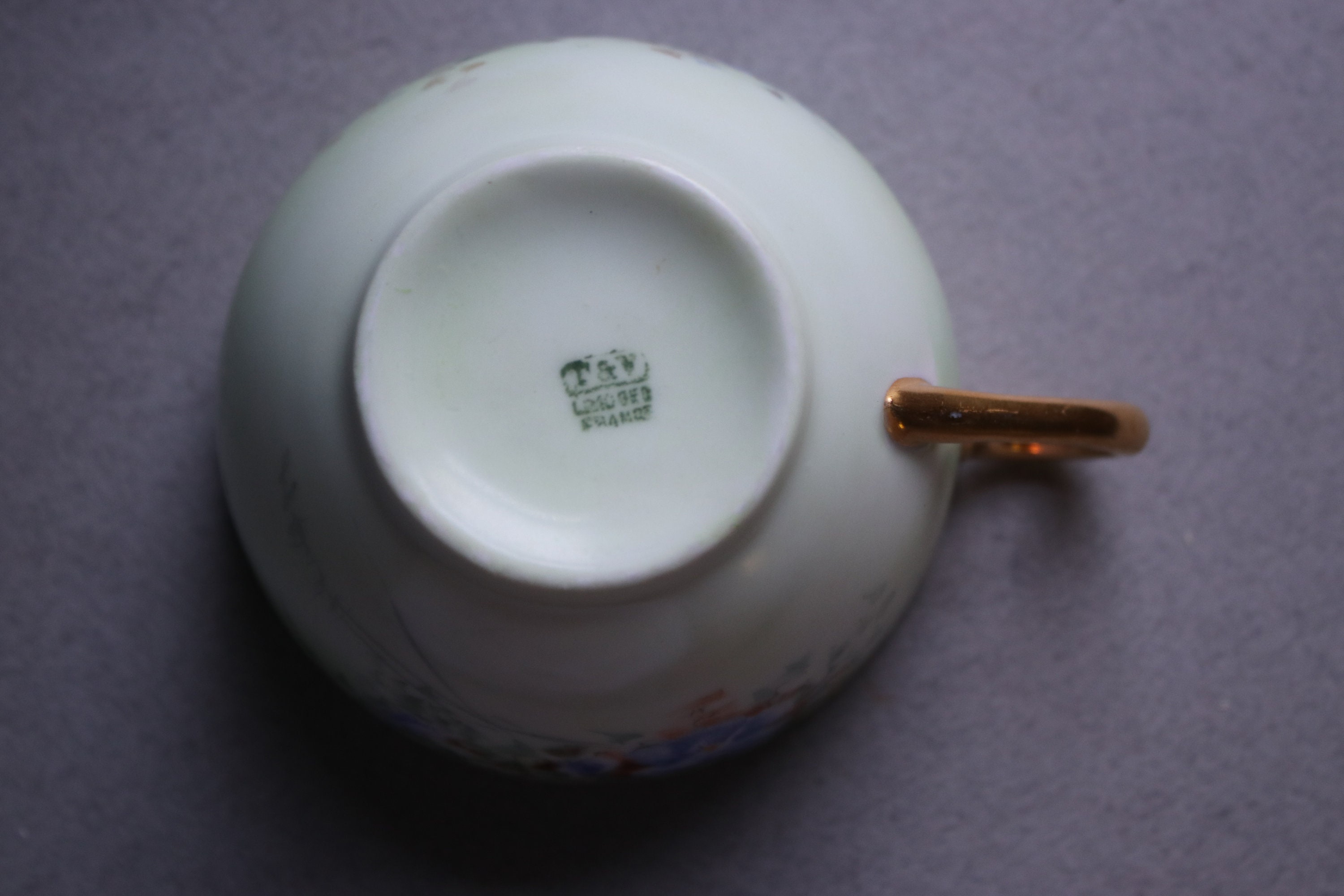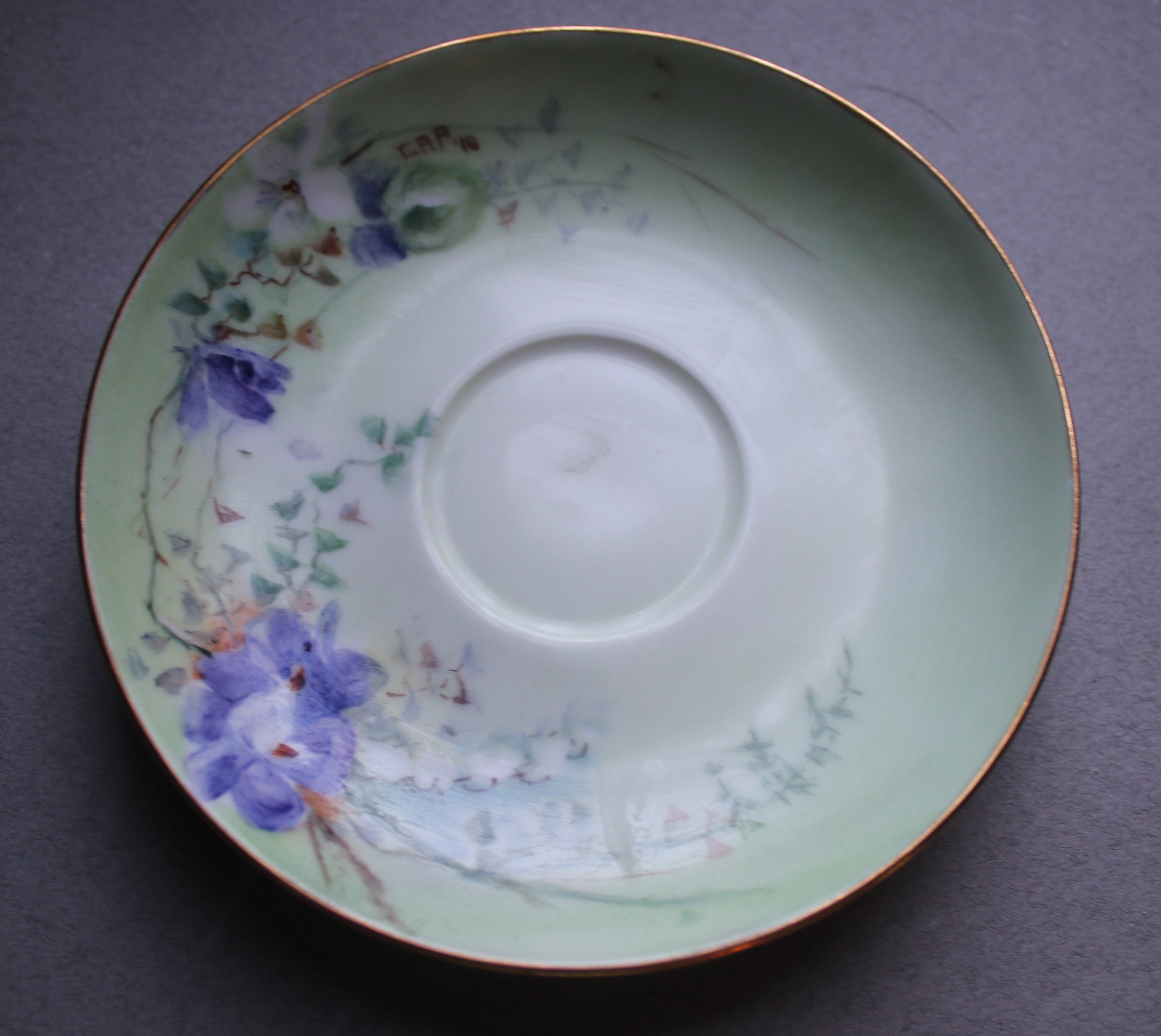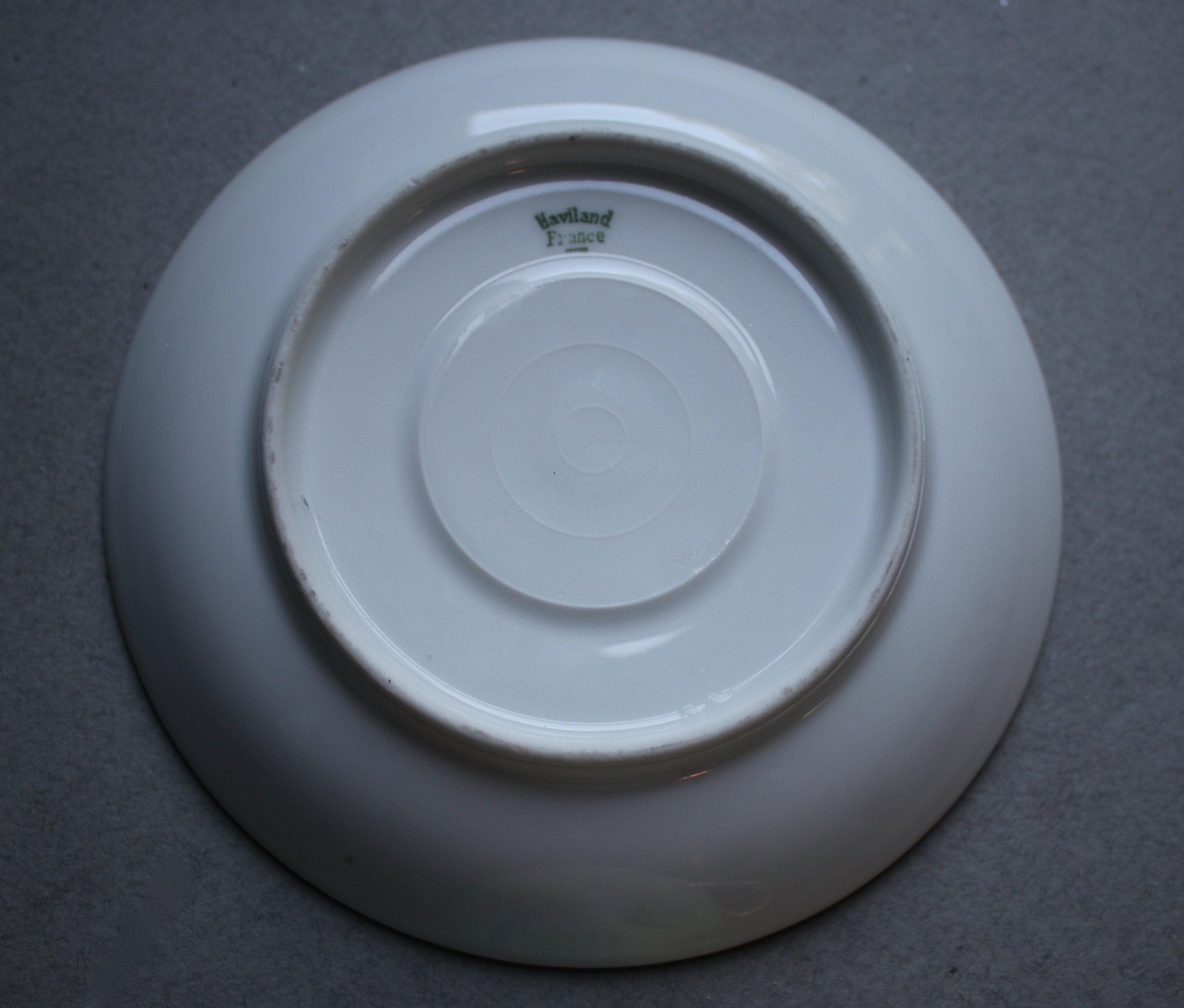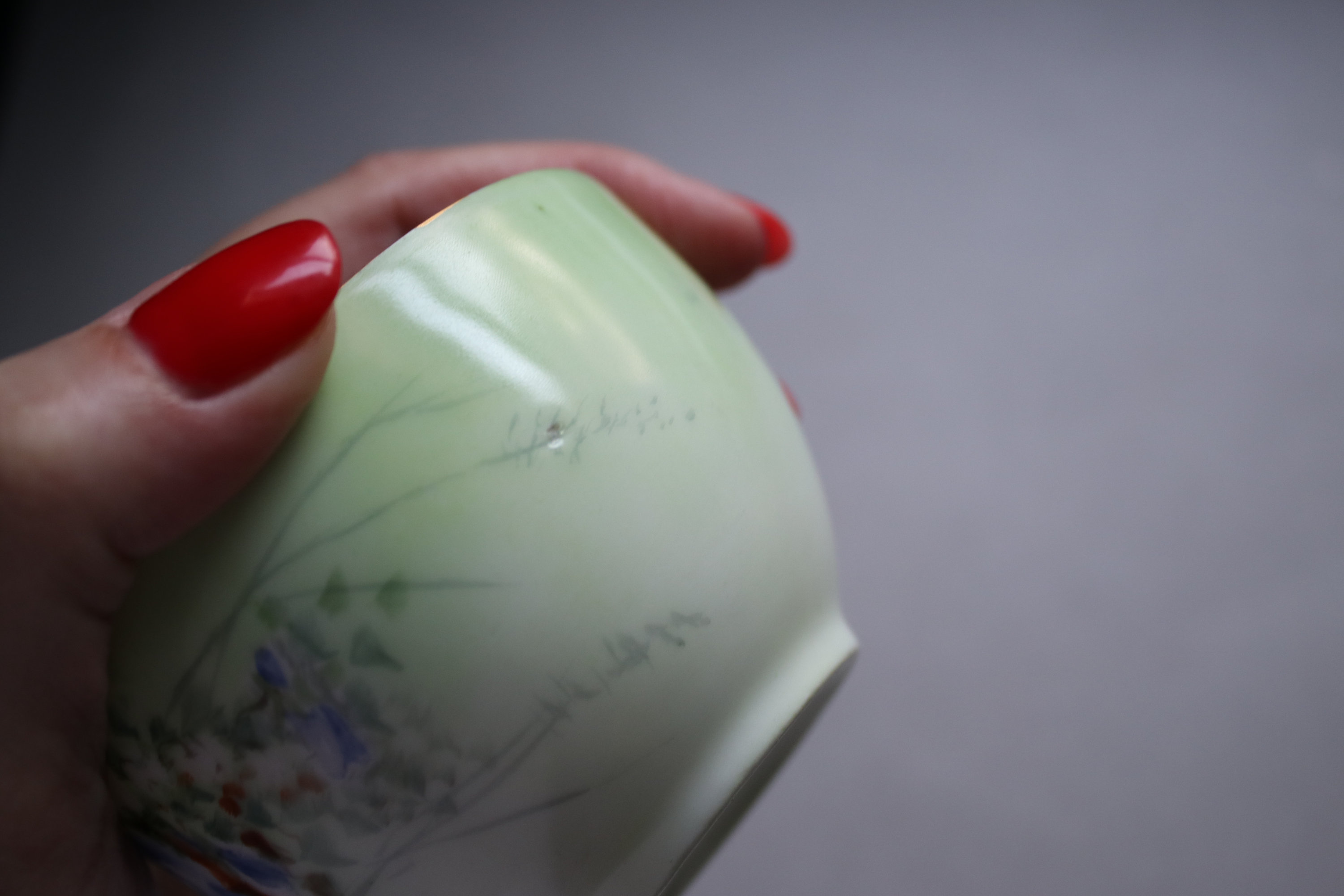Tresseman and Vogt (T & V), Haviland, Limoges Hand-painted Cup and Saucer with Violet Motif
Interestingly, the teacup is marked with the Tresseman and Vogt's green stamp, indicating the piece was sold as a blank. The saucer is marked Haviland, France. The artist's initials "CAP" and the year 1910 (as '10) are on both the teacup and saucer.
Condition: There is one, perhaps ⅛", mark on the side of the teacup as seen in the third and in the last photo. I believe this is a firing imperfection and not something that occurred after the manufacture although I cannot be certain. The gold trim on the handle, the rim of the teacup and the saucer is in good condition with very little wear.
The cup measures 3.5" across the mouth and has a depth of 2". The saucer measures 5" across.
From the Steinmark site: John Vogt (1815-1906) was born in Germany to a family of porcelain and glass retailers. In 1840 he opened an import house in New York, then in the 1850's an office in Limoges where he began decorating porcelain for export. His first son Charles Vogt (d1886) and his nephew Frederic Dose (d1908) joined the New York company in 1865 and traded as Vogt & Dose, which also had a decorating studio in New York. Dose took over in 1886 then was succeeded by John Vogt's second son, Gustave, whose son Charly in turn managed the New York operations. This closed in 1931.
Meanwhile, Gustave Vogt (1849-1937), had already taken over the Limoges branch by 1870 and became partners with Emilien Tressemanes in the early 1880's. In 1891 they purchased two small porcelain factories, in the suburb of Montjovis, Limoges. As Tressemanes & Vogt, they made high quality whiteware for export to the USA; distributed no doubt, through their New York office. Tressemann retired in 1907 and Gustave Vogt became sole owner and changed the name to Porcelaine Gustave Vogt. In 1919 Martial Raynaud bought the company and continued using the T&V mark as well as his own Raynaud mark. Raynaud porcelain remains in business today.
From the Robbinsnest site: Haviland China D.G. & D. Haviland & Company of New York, a china importing company, was created by David and Daniel Haviland in 1838. David moved to Limoges, France where he unwittingly reinvented the French fine china manufacturing process by both manufacturing and decorating whiteware blanks at the same location. Another brother, Robert, joined the company in 1852 and the name was changed to Haviland & Company.
Thank you for looking.
Returns & Exchanges
I gladly accept returns, exchanges, and cancellations
Just contact me within: 3 days of delivery
Ship items back to me within: 7 days of delivery
Questions about your order?
Please contact me if you have any problems with your order.
